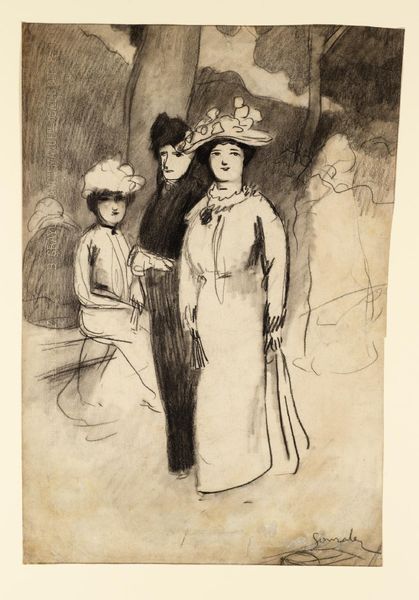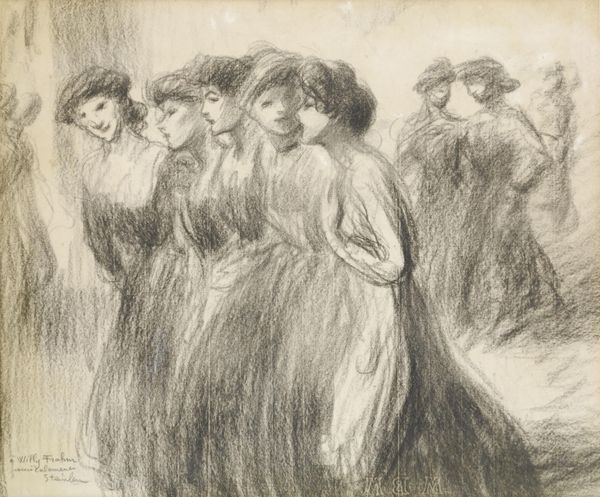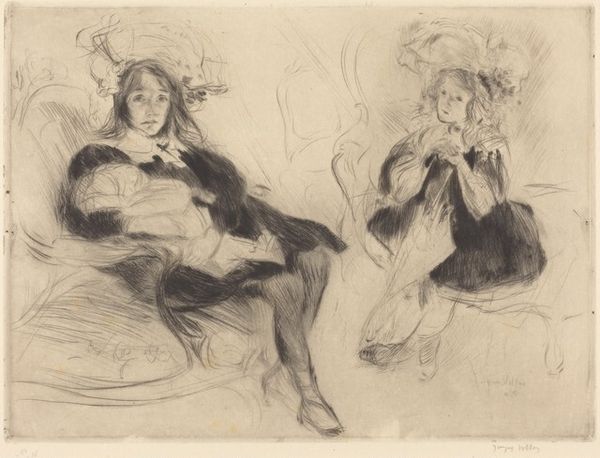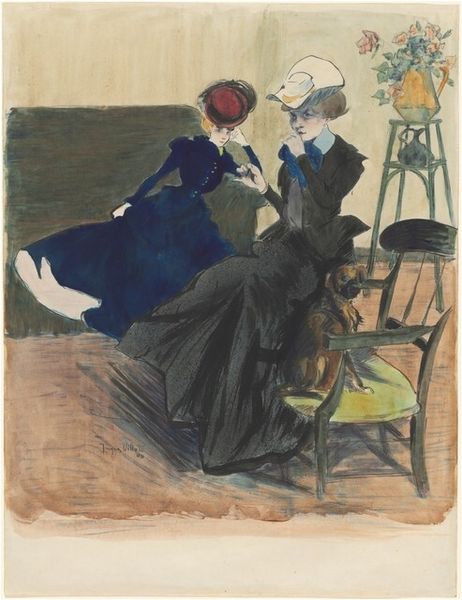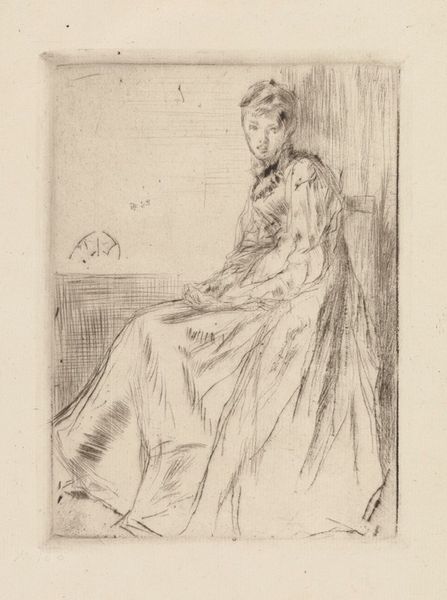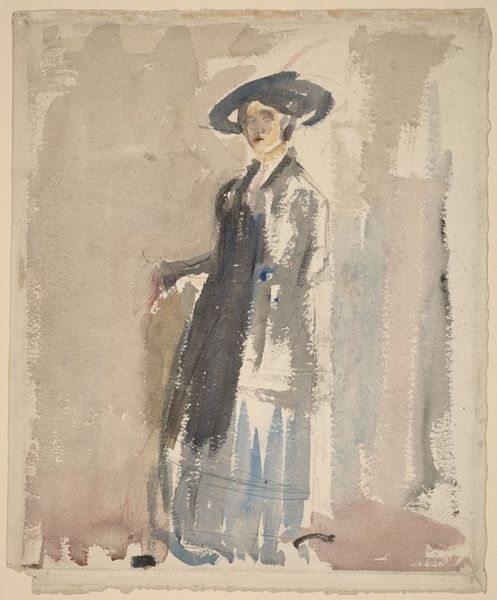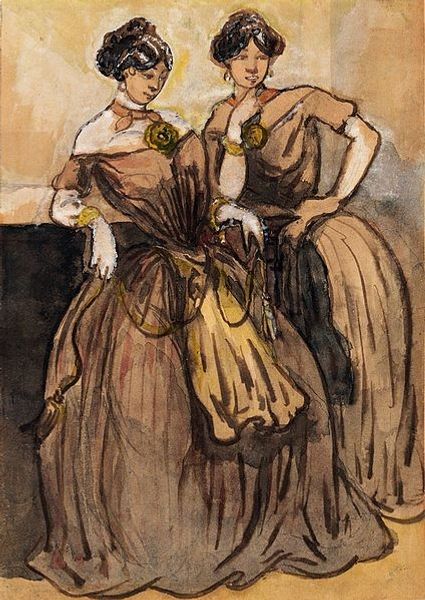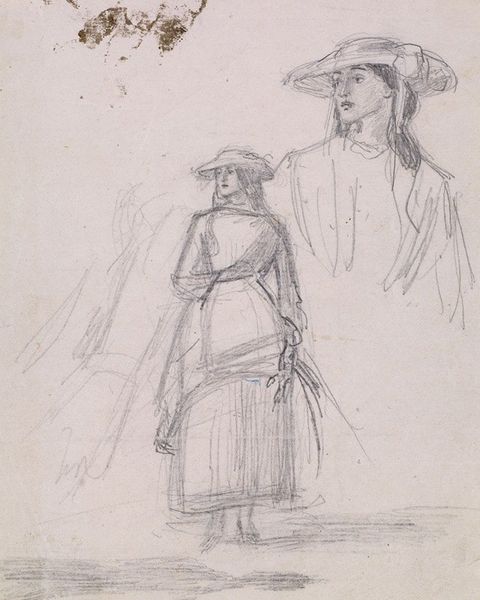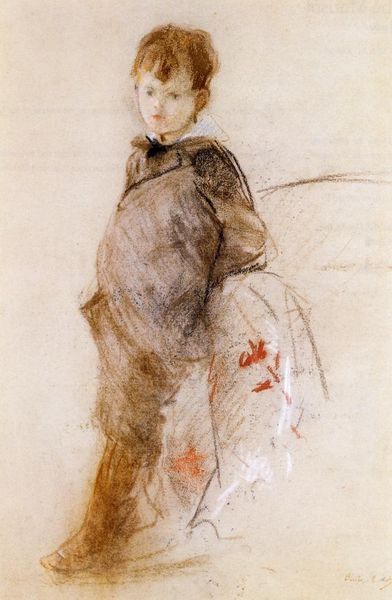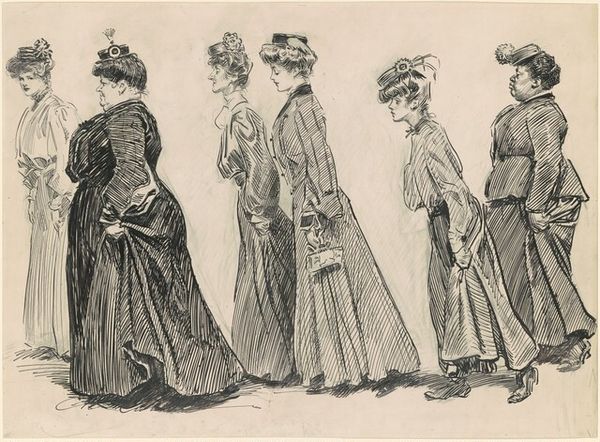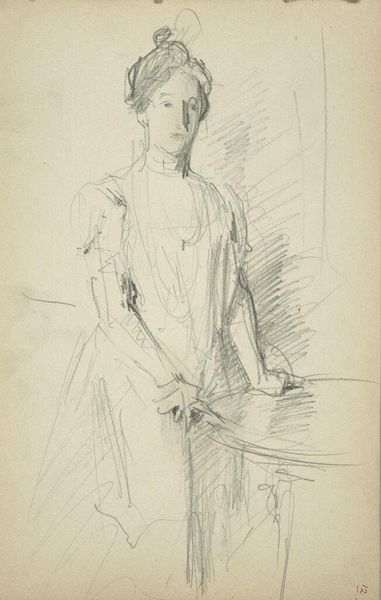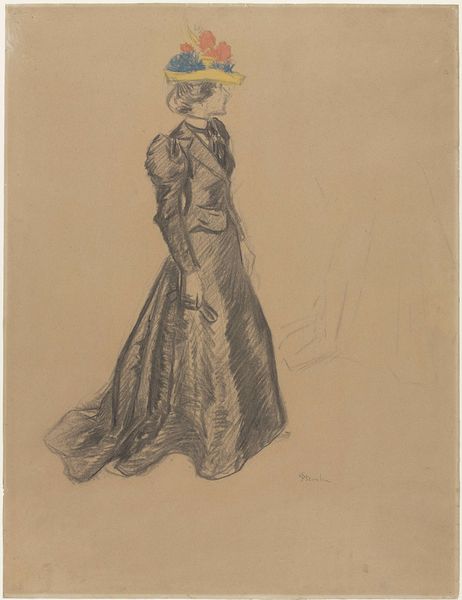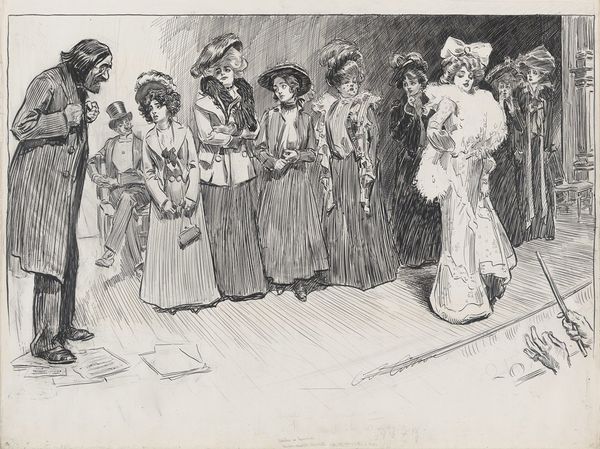
drawing, coloured-pencil, paper, dry-media, pencil, pastel
#
portrait
#
drawing
#
coloured-pencil
#
16_19th-century
#
impressionism
#
figuration
#
paper
#
dry-media
#
sketch
#
group-portraits
#
pencil
#
costume
#
line
#
pastel
#
academic-art
Copyright: Public domain
Editor: This is "Project for Portraits in a Frieze - Three Women" by Edgar Degas, from 1879, created using pencil and pastel on paper. It’s striking how quickly Degas captures these figures. What visual echoes do you observe in this work? Curator: Well, the layering of the pencil and pastel suggests a superimposition of eras. The swift, confident strokes – almost like runes – bring to mind both the immediacy of modern life and the weight of social expectation bearing down on women. The 'frieze' itself hints at classical sculpture; in what ways do the women conform or resist this historical echo? Editor: I see what you mean, like they are sculptures waiting to be carved out of stone. It almost seems like he’s showing us a spectrum of possible societal roles. Curator: Precisely! Their placement suggests a social narrative unfolding left to right. Consider the parasol one carries. It protects them, yes, but also confines them to certain spaces and roles. What hidden stories do their hats conceal? Editor: That's true, and I love the use of hats; almost like visual emblems or heraldic crests indicating different aspects of femininity. Curator: And consider the books held by the central figure: are these symbols of intellect, aspiration, confinement, or something else entirely? The women are all swathed in layers of fabric, a signal of status but simultaneously creating constraints around posture, gesture and movement. These women are so much more than bodies. They possess inner lives and perhaps unrealized aspirations, dreams, memories that press against their composed surfaces. What will they make of the coming century? Editor: It is thought-provoking to see the women represented less as individuals and more as expressions of the social and cultural pressures of the time. It has provided so much insight to reconsider the symbols! Curator: Yes, art allows us to see the past, engage the present, and suggest a more nuanced, inclusive future.
Comments
No comments
Be the first to comment and join the conversation on the ultimate creative platform.
